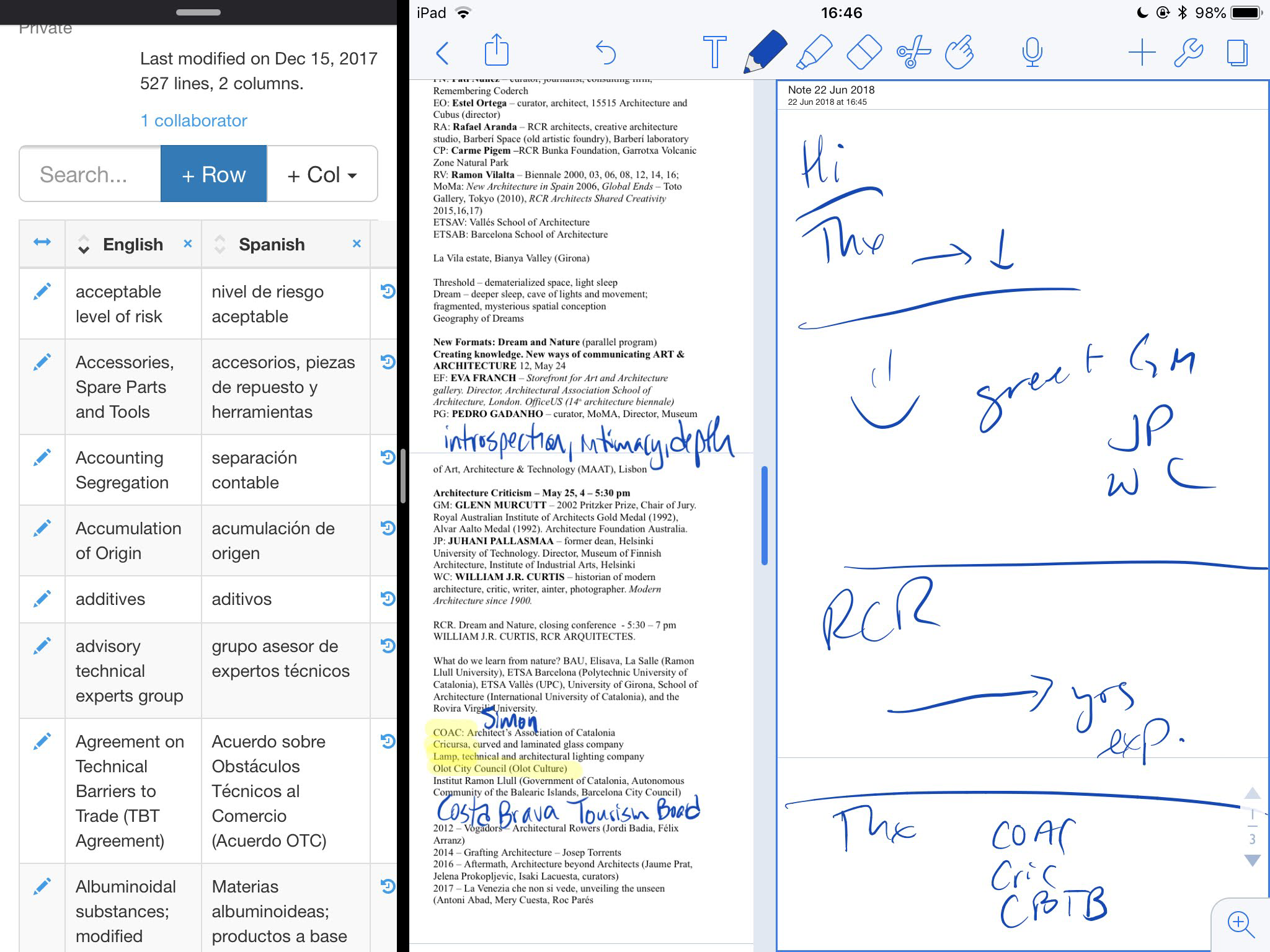How To Use a Tablet for Consecutive Note-Taking
In past articles, we’ve discussed why we love tablets for interpreting and shared some of our favorite tech tools for practicing consec.
Now it’s time to dive into how you can actually use a tablet for consecutive note-taking.
Unsure about using a digital notepad? Wondering how to take notes on your tablet or take it to the next level with multitasking? Looking for the best consecutive note-taking app?
Read on!
Why use a tablet as digital notepad?
When we talk about using a tablet to take notes, we sometimes hear questions like, “Does that mean you type your notes? Why would you do that?”
The truth is that taking notes on a tablet is incredibly similar to taking notes on paper. You just grab your stylus, open an app, and start taking notes!
It takes a little getting used to, but offers tons of additional benefits.
For example, you never have to worry about running out of paper or ink again. (Make sure to charge your tablet and stylus before your assignment. 😉)
Tablets are highly portable, and allow you to carry everything you need - meeting documents, dictionaries, glossaries - on a single device.
It’s also easy to store and organize past notes. If you work for a client regularly, you can quickly find the notes from your last assignment.
In our research, we found that clients find interpreters who use tablets to be more professional and memorable.
Plus, you can easily view meeting documents, glossaries, fact sheets, and other materials alongside your notes using multi-tasking mode. More on that below.
Taking consecutive notes on a tablet
We think the easiest way to understand how you can use a tablet for interpreting is to see it in action. So why not check out this demo video?
As you can see, our notes are almost identical to the notes we’d write on pen and paper, with a few bonus features.
When we reach the end of a page, we scroll down rather than flipping to the next page. This unlimited scrolling makes it even easier to deliver a fluent rendition of the original speech.
Custom ink colors, pen types and stroke widths let you tailor your stylus to your needs. It’s also easy to switch between writing utensils. For example, we often switch to a different color or the highlighter to separate between sections.
Some applications let you strike out text to erase it quickly. Or you can upload a custom paper layout, which is perfect for interpreters who like taking notes on grid paper or working with two columns or a margin line.
Finally, digital bookmarks can help you jump back to the beginning of a speech or a specific passage.
Consecutive notes and multitasking
As we mentioned earlier, it’s easy to use the split screen feature on your tablet to view your notes alongside other materials.
For example, you can put your notepad on one side of the screen, and a list of abbreviations and keywords - or a fact sheet you’ve prepared - on the other side.
Alternately, view your meeting document alongside your notes. This is great for meetings where your clients are discussing a document. If it’s a drafting meeting, you can annotate the document on one side of the screen and take notes on the other. You can even use different colors on the reference document for suggestions made by different speakers.
Put a dictionary or glossary alongside your notes. With a bit of practice, you might even be able to quickly look up a term while taking notes or interpreting. This is easiest with the incremental search built into glossary management tools, which displays terms from your glossaries with just a few keystrokes. (More on that in our Glossaries for Interpreters 2.0 course.)
What is the best consecutive app?
On most tablets, you can use the generic note-taking app to jot down a few ideas. But for full-fledged consecutive notes with all the bells and whistles - like custom paper, vertical scrolling, smooth page turns, bookmarks, and easy filing options - it’s worth getting a dedicated note-taking app.
On the iPad, we’ve been huge fans of Notability for many years. It offers all the features listed above, plus you can record the speaker while you take notes. The audio recordings and what you write are kept in sync, which allows you to jump to any point in your notes and listen back, or even use the recording for a hybrid interpreting technique called Sim-Consec.
Our default recommendation for Android has been Bamboo Paper, a simple note-taking app that is great for trying out digital note-taking, but might leave you wanting more as you build up your skills. If your tablet is made by Samsung, give Samsung Notes a try. The app has seen huge improvements recently and now packs countless features into an easy-to-use interface. It even lets you record audio that is time-synced with your notes.
On Windows devices, Microsoft OneNote seems to be the best option available right now. While it doesn’t have the “endless vertical paper” we like, many interpreters appreciate the big canvas that OneNote provides. You’ll definitely want to take it for a spin.
This article barely scratches the surface of how to use a tablet for consecutive interpreting. If you’re an iPad user and want a more hands-on experience, our on-demand course, Cutting-Edge Consecutive: A fresh take on notes, is for you! And we’ll be running a live edition of the course from January 17 - February 4. 😄
Please note: Given the swift pace of technological evolution, these recommendations are likely to change over time, but we’ll endeavor to keep this post updated!
This article was excerpted and adapted from the Tablet Interpreting Manual, and was published in the January 2022 edition of the Tool Box Journal.

